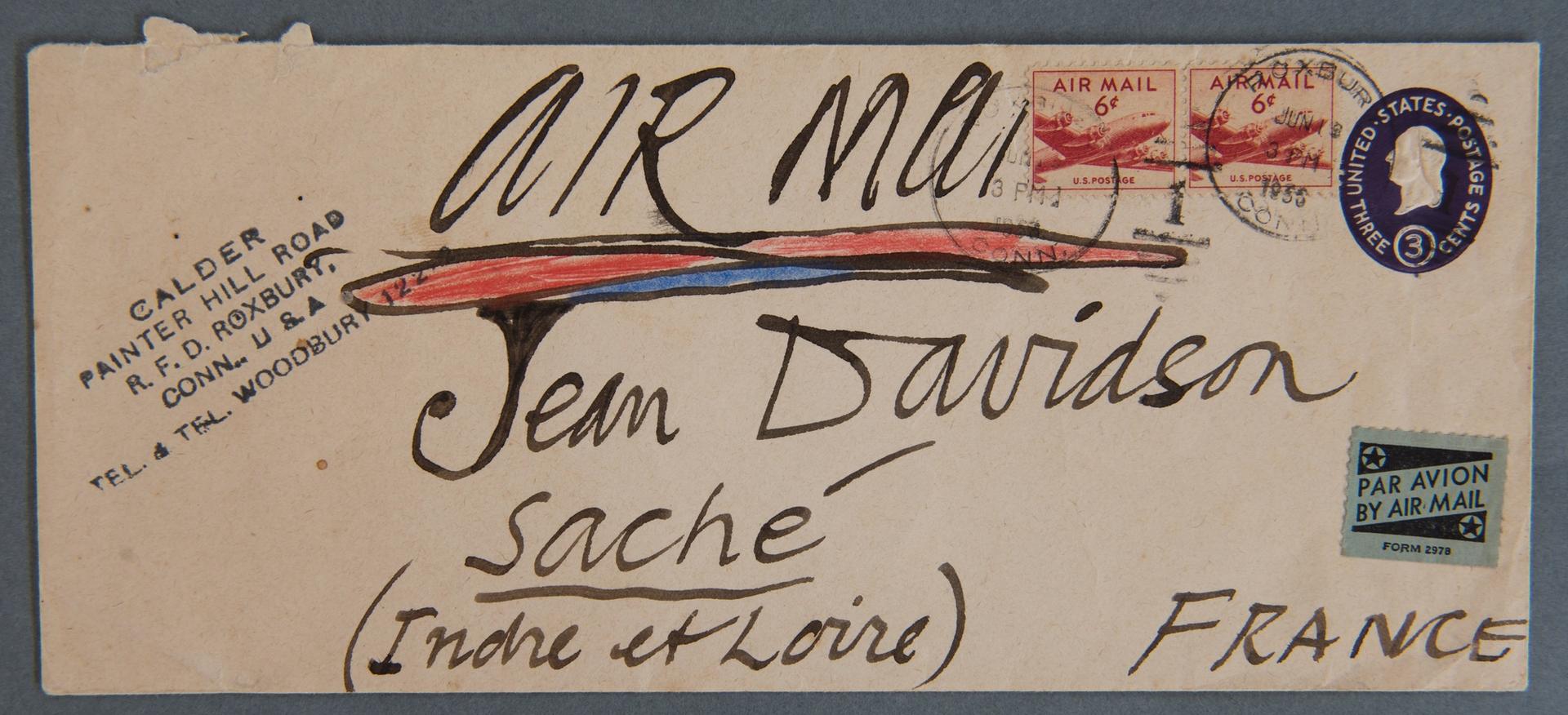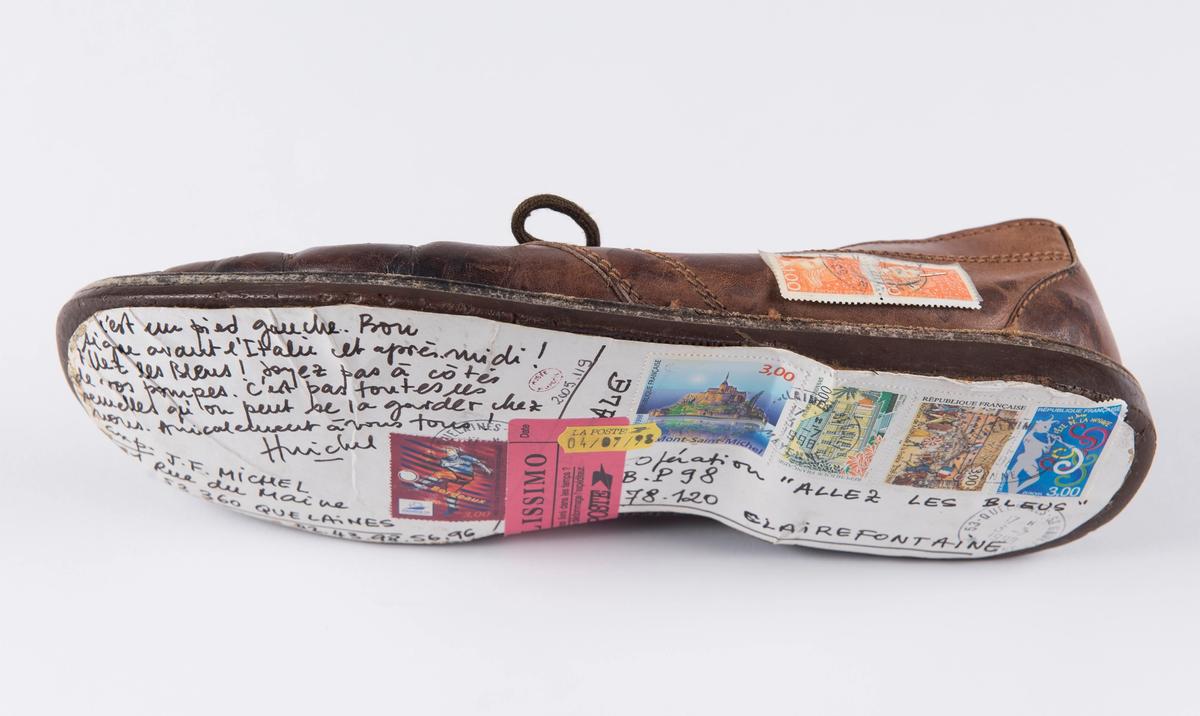The Musée de la Poste in Paris, which specialises in the history of the French postal service, is reopening tomorrow after a four-year renovation by Jung Architects. Home to more than a million stamps, this 1970s building also harbours around 6,000 works of Modern and contemporary art.
The little known collection—including gifts, purchases and commissions—will be highlighted in a brand new section of the museum. Exhibits range from Yves Klein's 1957 set of eight blue stamps to a ball gown made of 2,000 stamps, designed in 1947-48 by a Lyon-based philatelist. Decorated mail boxes will be displayed on rotation, with those by Skall and street artist C215 paving the way for others still in storage.

A decorated envelope by Alexander Calder (1956 ) © Adagp, Paris, 2019 © Museum of La Poste - La Poste / Thierry Debonair, 2019
Postcards, invented in the mid-1850s, have long been used as an artistic medium. The Surrealist series issued by Georges Hugnet in 1937 is a case in point. The 21 designs selected by the publisher were reproductions of existing paintings and sculptures by artists such as Marcel Duchamp, René Magritte, Max Ernst and Hans Arp—except for Picasso’s Poisson d’Avril (April fool), a picture riddle made especially for Hugnet. Salvador Dalí’s La mélancolie gâteuse des chiens comme une vertigineuse descente en ski (The doddering melancholia of dogs as a dizzying ski descent) is the only item that was already a postcard before it was duplicated. Dalí sent it to Surrealist founder André Breton in 1932.

The façade of the Musée de La Poste with the sculpture by Robert Jouvin (2019) © Musée de La Poste – La Poste / Thierry Débonnaire, 2018
The series “was a way for the Surrealists to give more exposure to their work”, says Monika Nowacka, conservator in charge of the museum’s philatelic department. “Although Hugnet’s project was not a great success.”
Envelopes also appear as both a medium and a source of inspiration. The museum will show two wrappers that Alexander Calder illustrated for his son-in-law Jean Davidson as well as two monumental paintings from Christian Debout’s 1980s series Les enveloppes. Then there is an envelope-shaped marble sculpture by Silvina Spravkin, which the museum purchased in 2009.


